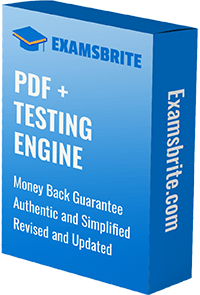
Certified Cloud Native Platform Engineering Associate
Last Update Oct 29, 2025
Total Questions : 85
We are offering FREE CNPA Linux Foundation exam questions. All you do is to just go and sign up. Give your details, prepare CNPA free exam questions and then go for complete pool of Certified Cloud Native Platform Engineering Associate test questions that will help you more.



In the context of platform engineering and the effective delivery of platform software, which of the following statements describes the role of CI/CD pipelines in relation to Software Bill of Materials (SBOM) and security scanning?
To simplify service consumption for development teams on a Kubernetes platform, which approach combines service discovery with an abstraction of underlying infrastructure details?
In the context of Agile methodology, which principle aligns best with DevOps practices in platform engineering?
What is the primary purpose of using multiple environments (e.g., development, staging, production) in a cloud native platform?
A Platform Team is adopting the HEART framework to measure user experience of their developer portal. Which of the following aspects does the HEART framework primarily focus on to help improve developer experience and platform performance?
Which IaC approach ensures Kubernetes infrastructure maintains its desired state automatically?
How can an internal platform team effectively support data scientists in leveraging complex AI/ML tools and infrastructure?
In a CI/CD pipeline, why is a build artifact (e.g., a Docker image) pushed to an OCI-compliant registry?
A platform engineering team is building an Internal Developer Platform (IDP). Which of the following enables application teams to manage infrastructure resources independently, without requiring direct platform team support?
Why is centralized configuration management important in a multi-cluster GitOps setup?
What is a key cultural aspect that drives successful platform adoption in an organization?
As a Cloud Native Platform Associate, you are tasked with improving software delivery efficiency using DORA metrics. Which of the following metrics best indicates the effectiveness of your platform initiatives?
Development teams frequently raise support tickets for short-term access to staging clusters, creating a growing burden on the platform team. What's the best long-term solution to balance control, efficiency, and developer experience?
Which of the following is a primary benefit of adopting a platform approach for managing application environments with diverse needs?
In a cloud native environment, which factor most critically influences the need for customized CI pipeline configurations across different application types?
Which of the following best describes the primary function of an incident management system during a platform outage?
Why might a platform allow different resource limits for development and production environments?
As a Cloud Native Platform Associate, you need to implement an observability strategy for your Kubernetes clusters. Which of the following tools is most commonly used for collecting and monitoring metrics in cloud native environments?
What is the fundamental difference between a CI/CD and a GitOps deployment model for Kubernetes application deployments?
In a GitOps setup, which of the following correctly describes the interaction between components when using a pull-based approach?
Which platform component enables one-click provisioning of sandbox environments, including both infrastructure and application code?
A platform team is implementing an API-driven approach to enable development teams to consume platform capabilities more effectively. Which of the following examples best illustrates this approach?
In the context of OpenTelemetry, which of the following is considered one of the supported signals of observability?